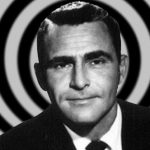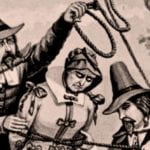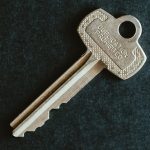 Music
Music  Music
Music  History
History 10 Less Than Jolly Events That Occurred on December 25
 Weird Stuff
Weird Stuff 10 Funny Ways That Researchers Overthink Christmas
 Politics
Politics 10 Political Scandals That Sent Crowds Into the Streets
 Weird Stuff
Weird Stuff Ten Bizarre Facts About The Doge Meme
 Our World
Our World 10 Ways Your Christmas Tree Is More Lit Than You Think
 Movies and TV
Movies and TV The 10 Coolest Stars to Set Sail on The Love Boat
 History
History 10 Things You Didn’t Know About the American National Anthem
 Technology
Technology Top 10 Everyday Tech Buzzwords That Hide a Darker Past
 Humans
Humans 10 Everyday Human Behaviors That Are Actually Survival Instincts
 Music
Music 10 Surprising Origin Stories of Your Favorite Holiday Songs
 History
History 10 Less Than Jolly Events That Occurred on December 25
 Weird Stuff
Weird Stuff 10 Funny Ways That Researchers Overthink Christmas
Who's Behind Listverse?

Jamie Frater
Head Editor
Jamie founded Listverse due to an insatiable desire to share fascinating, obscure, and bizarre facts. He has been a guest speaker on numerous national radio and television stations and is a five time published author.
More About Us Politics
Politics 10 Political Scandals That Sent Crowds Into the Streets
 Weird Stuff
Weird Stuff Ten Bizarre Facts About The Doge Meme
 Our World
Our World 10 Ways Your Christmas Tree Is More Lit Than You Think
 Movies and TV
Movies and TV The 10 Coolest Stars to Set Sail on The Love Boat
 History
History 10 Things You Didn’t Know About the American National Anthem
 Technology
Technology Top 10 Everyday Tech Buzzwords That Hide a Darker Past
 Humans
Humans 10 Everyday Human Behaviors That Are Actually Survival Instincts
10 Insane Episodes in the War on Coffee
Coffee and the caffeine it contains is the world’s most popular drug. Before heroin, cocaine, or marijuana took the stage, the War on Drugs went after coffee. Ever since its discovery in Ethiopia around AD 800, controversy followed coffee as it made its way north, spreading throughout the Middle East and, from there, around the world. As a powerful stimulant, it invited suspicion from religious, government, and medical authorities.
A world without coffee? Without Starbucks? It’s simply unimaginable. But many times in history, people have tried to eradicate coffee. This list chronicles those episodes and how, fortunately for the world, coffee emerged triumphant.
Related: 10 Completely Normal Things That Are Banned in North Korea
10 Khair Bey Fires the First Shot
Coffee was introduced in Mecca in the 15th century and quickly became popular, leading to the opening of many coffeehouses. Over a cup of their favorite beverage, customers could discuss news, play chess, sing, dance, or simply relax to music. But the conservative governor of Mecca, Khair Bey, looked at these gatherings with mistrust. This new brew could alter their minds to commit acts against the sacred law of Islam.
One Friday evening in 1511, the Muslim holy day, Khair was heading home after his devotions at the Kaaba when he saw a group of men on the grounds of the holy shrine passing around a cup of coffee, made exuberant by the effect of the drink. He immediately dispersed the group and called a council of theologians and lawyers for the next morning. Two doctors testified that coffee upset the balance of the body’s humors and caused illness. Witnesses who had drunk coffee said that it “altered their senses and spirits.” On the basis of these claims, the assembly voted to ban coffee and close the coffee shops.
Bags of coffee were seized and burned, and those caught drinking were beaten. Coffee quickly disappeared from marketplaces, but people continued drinking it in private. The Sultan in Cairo, hearing what Khair was up to, ordered him to desist, saying that what was not forbidden in Cairo was not forbidden in Mecca. The next year, Khair was removed from office. His chief judge was sacked and ordered to Egypt. Happy days were here again.[1]
9 Riots in Cairo
But Cairo would not remain a coffee haven for long. The first fatwa against coffee was decreed in 1512, but people simply ignored it. Not even the ban pronounced by four judicial schools two years later could halt the spread of coffee. In the early 1530s, the scholar and preacher Abd al-Haqq al-Sunbati spoke out, saying coffee “intoxicates” and made the drinker divulge intimate secrets, and was generally harmful to health.
A mob, galvanized by al-Sunbati’s anti-coffee harangue, took to the streets and attacked the coffee shops. They broke the urns and cups and beat up the patrons. Soon, the two sides—pro-coffee and anti-coffee—were coming to blows. The threat of more violence prompted a judge named ibn Ilyas to settle the matter once and for all with an experiment. He ordered coffee to be drunk in his presence and remained with the drinkers all day to observe any changes in their behavior. None of the participants displayed anything unacceptable in their actions, and ibn Ilyas decreed coffee legal.
Nonetheless, another cafe was raided sometime later, and the customers were imprisoned and beaten before being set free. Yet coffee and its addicts continued merrily on as before.[2]
8 The Istanbul Coffee Party
Coffee arrived in Syria in the first half of the 16th century, perhaps by way of the pilgrimage route from Hijaz (Arabia) to Damascus. By the 1540s, coffeehouses dotted the city, alarming the anti-coffee forces. As in Cairo, a local preacher denounced coffee in a fatwa, and mobs swooped down on the coffee dens, but with judicial backing this time.
But the stubborn brew proved hard to eradicate, and two new measures against it were passed in the following years. Ottoman sultan Suleiman the Magnificent ordered a ban in 1546 covering Aleppo, Damascus, and Mecca. In 1565, the sultan ordered the coffeehouses of Jerusalem closed, saying that they had become “the meeting place of rascals and ungodly people.”
At this time, the imperial capital of Istanbul was also introduced to the delights of coffee. Arriving by sea, the ships carrying the beans were met at the dock by hostile prohibitionists, and in a preview of the Boston Tea Party, they bored holes in the ships, sinking them and their cargo of coffee. But the Istanbul Coffee Party couldn’t halt the inevitable. People got around the closure of coffeehouses by means of mobile coffee carts, and they could easily evade authorities by ducking into any nearby shop.
Despite more repeated attempts at prohibition in the ensuing decades, coffee survived and was now invading Europe.[3]
7 Cheating the Devil
Coffee reached Christian Europe from the Muslim world, so it is no surprise that the mysterious, dark, and bitter liquid was initially greeted with suspicion. It had reached Italy via the Venetian trade routes from North Africa and the Middle East. Its strange, invigorating effect on body and mind was addictive, making it seem more sinister to Church authorities, who called it “the bitter invention of Satan.” You could never trust those infidels.
Before deciding to ban it, they first consulted Pope Clement VIII. Clement asked for a cup, and tasting the brew, he reportedly exclaimed, “This Satan’s drink is so delicious. It would be a pity to let the infidels have exclusive use of it. We should cheat the devil by baptizing it.” The Pope’s blessing was enough. The first coffeehouse opened in Rome shortly afterward, in 1645. Coffee began its ascendancy among Christians, changing our breakfast and siesta habits forever.[4]
6 The War Turns Bloody
So far, the sporadic coffee prohibitions in the Ottoman realms were bloodless, with the offenders being dealt with a beating and jail time at worst. But with the accession of the paranoid Sultan Murad IV, things got deadly. Coffee culture had taken root in Istanbul, and the coffee shops became favorite hangouts for political discussion. In contrast to alcohol, coffee’s stimulating effect in sharpening the mind made for lively, animated meetings — a clear and present danger to his power, in Murad’s estimation.
Murad particularly feared the military clique of the Janissaries, and he was traumatized by their rebellion in which they murdered his brother Osman II. Coming to the throne as a child, Murad endured minor uprisings. In one, the Janissaries hanged his closest friend Musa. Janissaries frequented the coffeehouses and hatched their plots there. As Murad came of age and grew in power, he knew he must deal with the situation.
Murad was not against coffee per se—he himself drank it—but its public consumption in coffee shops led him to believe they were breeding places of discontent and rebellion. He decreed public drinking of coffee was illegal and offenders to be put to death. Stories were told that Murad himself roamed the streets of Istanbul in disguise, with a broadsword, beheading anyone he caught drinking coffee.
Murad died in 1640, but his successors continued his policy, though the penalty was somewhat relaxed. First-time offenders were beaten by a cudgel, but do it a second time, and you were sewn into a leather bag and drowned in the Bosporus.[5]
5 The Seminaries of Sedition
Like Murad IV, King Charles II of England had reason to be paranoid. A rebellious Parliament had beheaded his father, Charles I, in 1649 after defeating him in a civil war. Now, the royal house of the Stuarts was restored after an interregnum of dictatorship under Oliver Cromwell, but Charles was still wary of political enemies. And he knew where they habitually gathered—London’s coffeehouses.
The city’s first coffeehouse opened in 1652 and multiplied as the brew increased in popularity. The coffeehouse drew men of all classes who enjoyed their cups as equals — a remarkable revolution in the highly structured English society. The favorite topic of discussion, of course, was politics, and this was what worried Charles. Coffeehouses had acquired a reputation as “seminaries of sedition,” and one 1681 comedy had a character saying, “In a coffee house just now among the rabble, I bluntly asked, which is the treason table?”
Housewives were also up in arms. A group of them issued “The Women’s Petition Against Coffee” in 1674, blaming coffee for making their husbands lazy, drunk, annoying, absent (presumably because they were spending their time in the coffeehouses), and, worst of all, impotent.
On June 12, 1672, Charles II issued a proclamation to “Restrain the Spreading of False News, and Licentious Talking of Matters of State and Government.” The king wrote, “Men have assumed to themselves a liberty, not only in Coffee-houses, but in other Places and Meetings, both public and private, to censure and defame the proceedings of State by speaking evil of things they understand not.” Spies were deployed to coffeehouses, and in 1675, Charles took the ultimate step in closing down the establishments altogether.
The thought of being separated from their beloved coffee provoked widespread protests from coffee lovers, and the ban could not be sustained. It was rescinded a scant 11 days later. Coffee and coffee shops continued through the years to spread ideas of dissent and revolution. The planning of the 1773 Boston Tea Party, the prelude to America’s War of Independence, was done at the Green Dragon coffeehouse in Boston, a hangout of the Sons of Liberty and dubbed “Headquarters of the Revolution” by Daniel Webster.
Murad and Charles might not have been unreasonable in their paranoia after all. [6]
4 King Gustav’s Experiment
Sweden’s King Gustav III, though largely hated for his absolutism, did have some enlightened policies, like the abolition of judicial torture and the promotion of religious tolerance. In 1746, the year Gustav was born, Swedish officials restricted the sale and consumption of coffee and tea so as not to compete with the beer and wine industry. Coffee and tea were demonized, and Gustav grew up believing that coffee was a dangerous poison.
Despite the negative press, coffee drinking had become popular by the time Gustav took the throne. The king set out to prove to his subjects how deadly coffee was in a manner befitting the Enlightenment—a scientific experiment. Gustav ordered the sentence of a pair of twins convicted of capital crime commuted and instead gave one coffee to drink and the other tea. They were to continue drinking daily until, as Gustav hoped, they poisoned themselves to death. The experiment was supervised by two doctors.
The first to die was Gustav—assassinated during a masquerade ball in 1792. Years later, the two doctors also died. The tea drinker eventually croaked at age 83, at a time when life expectancy was around 40. His coffee-drinking brother soon followed, the last man standing. Sweden, after a series of coffee bans and high taxes, had to admit defeat. Today, Swedes are among the most coffee-crazy people in the world.[7]
3 The Beer King
As in Sweden, coffee was resisted as a competitor to wine and beer in Prussia, and no one loved beer more than its king, Frederick the Great. He believed that the importation of coffee beans would result in money flowing out of the country, aggravating its economic woes. Then there were also the health issues: German doctors warned that coffee turned men effeminate and women sterile.
Frederick waged a lifelong war against coffee. He used every weapon at his disposal: bans, high taxes, and special police squads to catch offenders. He allowed only aristocrats to drink coffee and considered it an unnecessary luxury for common people. Above all, Frederick wanted to preserve Prussia’s fine military machine, which he so assiduously built up, from coffee’s corroding effects.
“My people must drink beer,” Frederick proclaimed on September 13, 1777. “His Majesty was brought up on beer, and so were both his ancestors and officers. Many battles have been fought and won by soldiers nourished on beer, and the King does not believe that coffee-drinking soldiers can be relied upon to endure hardships in case of another war.”
But even the great general could not halt coffee’s advance. In 1781, Frederick tried another tactic and imposed a royal monopoly on roasting the beans, creating a tidy fortune for himself. Spies called “coffee sniffers” would follow the aroma of illegal roasting and pounce on violators. A black market for coffee sprang up, and ordinary Germans tried to brew substitutes from wheat, barley, dried figs, or chicory.
Though coffee was temporarily held in abeyance, it held on. Leipzig, in particular, became famous for its coffeehouses, such as the Kaffeebaum, which is a favorite of university students. It was the golden age of the kaffeeklatsch. Like the rest of the world, Prussia surrendered to coffee.[8]
2 The Word of Wisdom
In the 1820s, the prophet Joseph Smith began receiving the revelations that led to the founding of the Church of Jesus Christ of Latter-Day Saints. In its early years, Mormonism was a despised sect that invited persecution because of its provocative teachings on polygamy, theocracy, blood atonement (“holy murder,” in other words), and communalism. They have since abandoned much objectionable doctrine, and today, Mormonism is an innocuous religion known for, among other things, weird underwear and rejection of coffee.
Among Smith’s revelations was a list of dietary regulations called the Word of Wisdom. Alcohol and tobacco were prohibited, and tea and coffee were categorized as “hot drinks” and unsuitable for the body. In the beginning, the Word of Wisdom was regarded only as advice and not binding commandments. The prophet himself enjoyed a drink now and then.
Brigham Young was more concerned with the economic effects of purchasing coffee from outside the Mormon community in Utah, and money was something the Saints were short of. Young was keen on self-sufficiency and would rather see the settlement grow its own beans. But by the latter half of the 19th century, when the Church formally abandoned its more controversial practices to pave the way for Utah’s statehood, Mormon attitudes toward coffee changed.
Needing something to redefine themselves as separate from the rest of the world, Church authorities began to make avoidance of coffee a test of true discipleship. The Word of Wisdom was more rigidly enforced. By the early 20th century, abstention from alcohol, tobacco, tea, and coffee became a requirement for the ministry and entrance to the temple. Those who disobey should expect some measure of public shaming. Just like the Jewish kosher laws, the Word of Wisdom came to set apart Mormons from those outside the fellowship.[9]
1 The Cereal Moguls
One of the sects to come out of the Great Disappointment of William Miller’s failed prediction of Christ’s return in 1844 was the Seventh-Day Adventists, well-known for its observance of the Saturday Sabbath and emphasis on healthy living. Co-founder Ellen G. White wrote, “Coffee is a hurtful indulgence. It temporarily excites the mind to unwonted action, but the after-effect is exhaustion, prostration, paralysis of the mental, moral, and physical powers. The mind becomes enervated, and unless through determined effort the habit is overcome, the activity of the brain is permanently lessened.”
Adventists hold that coffee drinking is a sin. This was the mindset Dr. John Harvey Kellogg had when he became the director of the Adventist sanitarium at Battle Creek, Michigan. He claimed that coffee damaged the liver, sucked out vitality, and caused premature aging. Breakfasts at the sanitarium instead served Kellogg’s special cereal blends and his Caramel Coffee, a substitute made from bread crusts, bran, and molasses. Kellogg’s brother Will would introduce his reinvented breakfast to a wider public in the form of Kellogg’s Toasted Corn Flakes.
In 1888, Charles William Post checked into the sanitarium after suffering a nervous breakdown. He came out a convert of Kellogg’s anti-coffee pseudoscience. In the 1890s, he began selling Postum, a grain-based coffee substitute similar to Kellogg’s, claiming that “you can recover from any ordinary disease by discontinuing coffee and poor food, and using Postum Food Coffee.”
Post unleashed an aggressive marketing campaign notorious for its fabrication of “facts” to turn coffee into a villain that harmed the nerves and stunted children’s growth. There was a litany of other ill effects: “coffee heart,” “brain fag,” blindness, ulcers, disintegration of brain tissues, indigestion, reduced work time, low energy, poverty, obscurity, and paralysis. Some of these myths, propagated by newspaper ads nationwide, are still with us today.
Successful as they were in popularizing their products, Post and Kellogg failed in their ultimate aim of getting America into a coffee-less breakfast. The immortal pick-me-up is just irresistible.[10]








